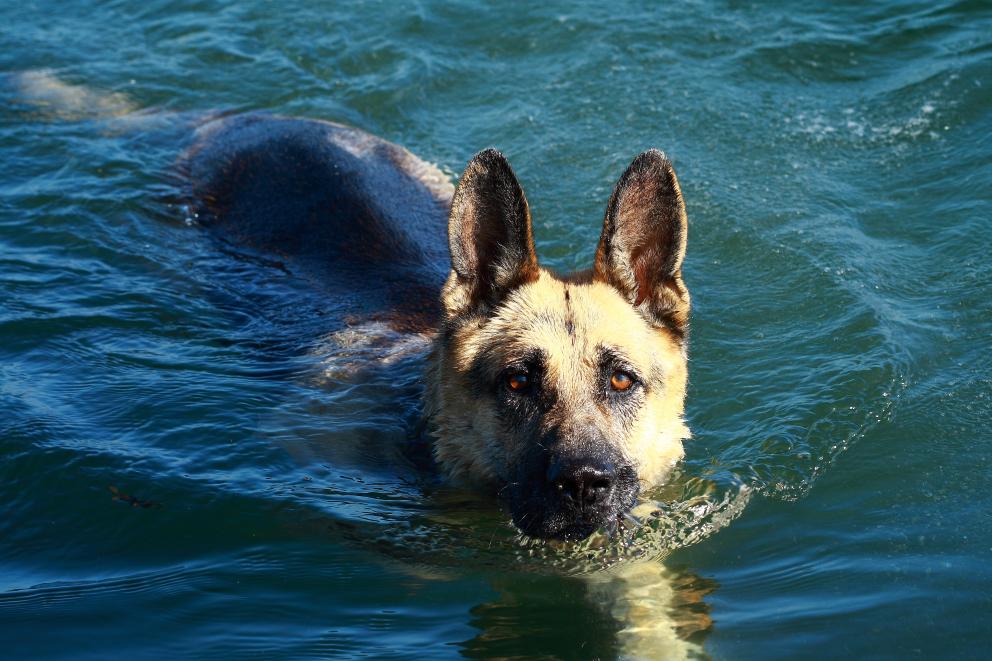You are here
Preparing Your Pets for Emergencies

In many households, pets are important and valued members of the family. Pet owners are encouraged to have emergency plans to respond to the various types of emergency situations including severe weather events or overland flooding. Increasing the chances of survival in an emergency like a fire, flood, or tornado depends on proper planning and preparedness. Pets are especially vulnerable in emergencies and when an evacuation takes place. Keep in mind that what is best for you is usually what is best for your pet. Your emergency plans should include consideration of what to do to properly care for your pet. The following information is provided so that pet owners are informed and better prepared to keep their pet safe in an emergency situation or evacuation.
IdentificationPermanent identification of your pet is important. If you become separated from your pet during an emergency, prioir identification may be the only way to find them. Make sure that each pet has a collar with visible identification at all times. Microchip identification is permanent and cannot get lost like a collar or tag.
Ask your veterinarian about microchip identification of your pet, and remember that your contact information must be kept up to date in a reliable database.
Pet Emergency KitOwners should plan to take their pets with them when an evacuation occurs. A ‘Grab and Go’ emergency kit will make evacuation with your pet easier and should be available for each pet in the house. These kits should include:
- Proof of ownership – recent photo of you with your pet
- Emergency contact information
- A sturdy, safe crate or carrier of the appropriate size (large enough to stand, turn around and lie down)
- A strong leash and collar or harness with ID tag and rabies vaccination tag
- Extra ID tag and collar
- Food and water for at least 72 hours; food in an airtight waterproof container, 4 litres water/day for the average dog, 1 litre water/day for average cat
- Bowls and can opener for food
- Sanitation supplies - plastic bags, newspaper, paper towels, litter and litter box
- Prescription medications, including instructions for use
- Veterinarian’s contact information
- Emergency Veterinary Hospital contact information
- Vaccination History/Certificate
- Documentation including recent photos, licensing information, adoption papers, emergency contact numbers, contact of friends or family that could house or care for your pet, and copies of vaccination and medical records in a waterproof container.
- Pet first aid kit
- Blanket or toys to provide comfort in a stressful situation
Know how you will stay informed: radio, TV, internet, cellular phone.
Plan how you will make the decision to evacuate or to stay. It may be that the decision is left up to you if authorities do not order an evacuation. Know where you will go if ordered to evacuate, and how you will assemble your pets and transport them safely.
Evacuation - The best way to protect your pet in an emergency is to take it with you. The ‘Grab and Go’ kit will facilitate evacuation if necessary.
If you plan to use a public evacuation shelter, expect that many will only accept service animals. Plan for alternate locations where your pet(s) may be safely housed and cared for in the event of an evacuation.
Possible places to contact before-hand and make arrangements to take your pet(s) in the event of an evacuation include:
- Hotels that accept animals during emergencies
- Boarding Facilities
- Veterinary Clinic or Hospital
- Family members, friends or neighbours
- Consider a ‘buddy system’ where you plan with neighbors, family or friends to make sure that someone can evacuate your pet(s) if you are unable to do so. Designate a specific location in your neighborhood or further away where you will meet in the event of an emergency.
Stay informed, watch TV, listen to the radio or check municipal internet sites for up to date information. Follow instructions of emergency personnel if ordered to evacuate or shelter in place. Keep your pet inside during a severe weather event. Animals may be sensitive to sudden changes in temperature or be frightened by thunder and lightning, or precipitation and isolate themselves. Never tether an animal outside during a storm. Keep cats and dogs separated from one another, stress may lead to unpredictable behavior. If you are ordered to evacuate, it is best to take your pet with you.
If you must leave a pet in your house, leave a sign in the window for emergency responders that indicate what animals are inside. Consider placing “Pets Inside” stickers on your windows for emergency responders. If you evacuate your pets, you should write “Evacuated with Pets” on the stickers. Before you leave do not tether the pet in the house, leave the toilet seats up for water and provide food in timed dispensers if possible.
In ClosingBe prepared to adapt your plans based on the circumstances. You should make every effort to follow the instructions of the authorities and the Incident Commander on the scene. With some simple preparation you can be ready for the unexpected. Those who take time to get ready will experience less difficulty and stress and be better prepared to care for their pets. Take the time now and get prepared.
Additional Resources:
City of Edmonton's Get Ready in the Park 2017
City of Edmonton's Get Ready in the Park 2017 Participating Agencies
City of Edmonton's Get Ready in the Park 2017 Facebook Event
Hashtags to use on Twitter and Facebook:
- #EPweek - for tweets relating to Emergency Preparedness Week
- #yegprepare
| Attachment | Size |
|---|---|
| 487.16 KB | |
| 667.64 KB |
